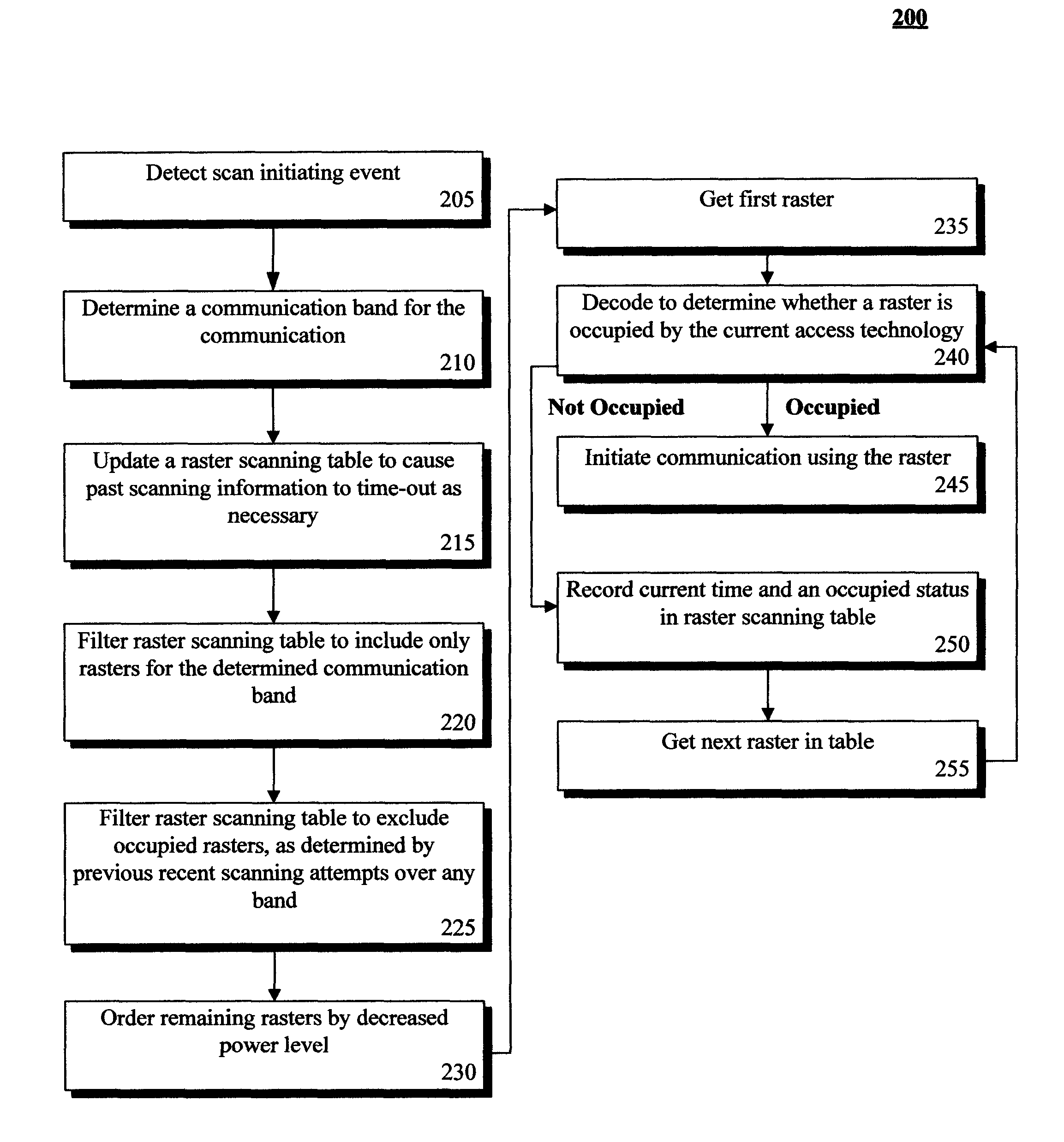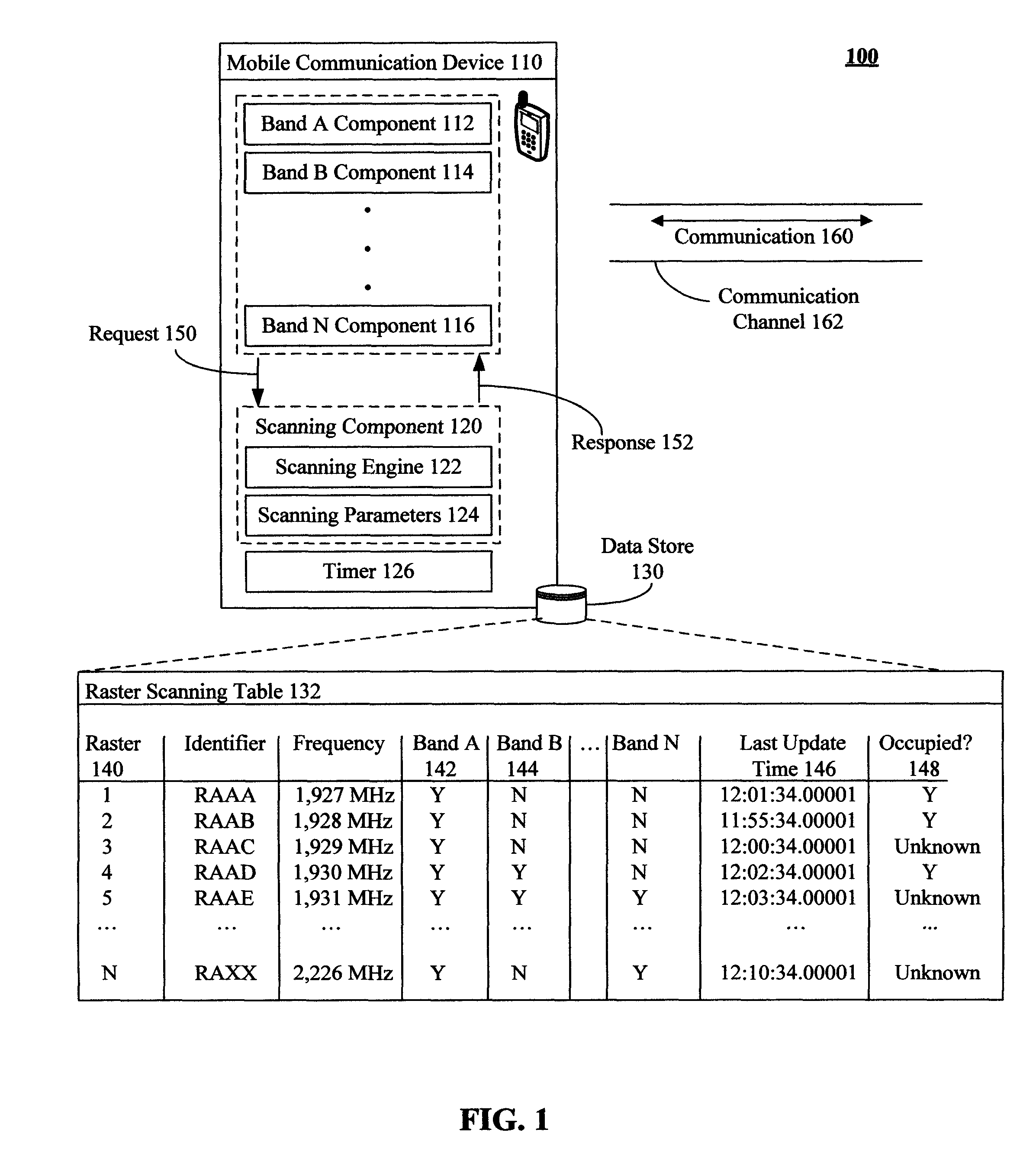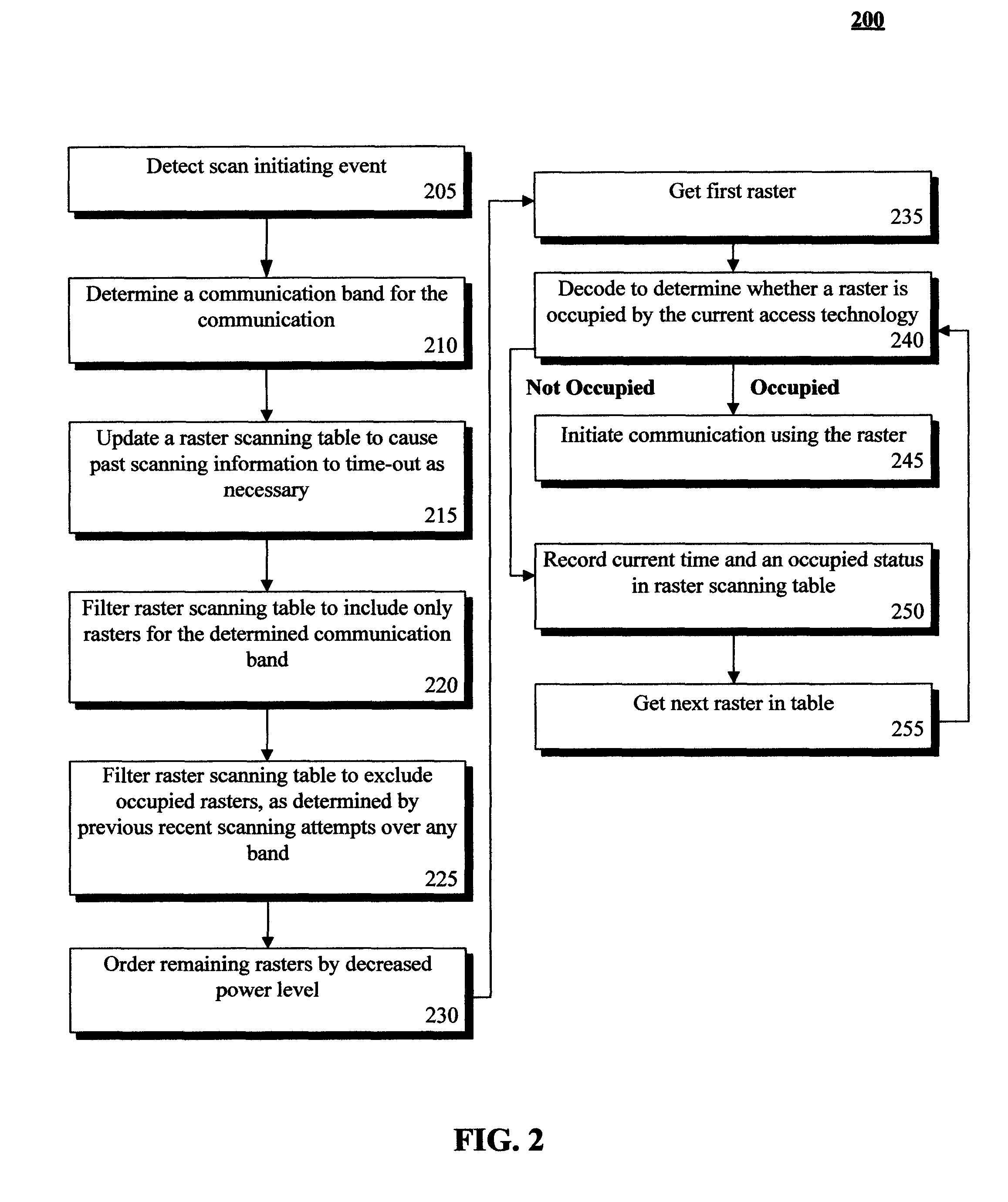Raster skipping in co-banded mobile communication devices based on previous scans for any band
a mobile communication device and co-band technology, applied in the field of mobile telecommunication devices, can solve the problems of excessive power consumption, draining the batteries of handsets, and banded mobile phones, and achieve the effect of significantly reducing scanning times, reducing the effect of wcdma and gsm scanning, and effectively no tim
- Summary
- Abstract
- Description
- Claims
- Application Information
AI Technical Summary
Benefits of technology
Problems solved by technology
Method used
Image
Examples
Embodiment Construction
[0017]FIG. 1 is a schematic diagram of a system 100 that implements raster skipping in co-banded mobile communication devices based on previous scans for any band in accordance with the embodiment of inventive arrangements disclosed herein. System 100 illustrates a co-banded mobile communication device 110 employing a raster scanning table 132 when scanning for available frequency rasters for establishing a communication channel 162, over which a wireless communication 160 can occur. The mobile communication device 110 can include a plurality of different bands 112-116. Each band 112-116 can represent an access technology associated with a frequency range for operation. The frequency ranges of the bands 112-116 can overlap. Raster scanning table 132 takes advantage of this overlap to reduce scanning time across a band 112-116 by skipping overlapping frequency rasters, which have been recently checked by another band 112-116 and determined to be occupied.
[0018]More specifically, a ba...
PUM
 Login to View More
Login to View More Abstract
Description
Claims
Application Information
 Login to View More
Login to View More - R&D
- Intellectual Property
- Life Sciences
- Materials
- Tech Scout
- Unparalleled Data Quality
- Higher Quality Content
- 60% Fewer Hallucinations
Browse by: Latest US Patents, China's latest patents, Technical Efficacy Thesaurus, Application Domain, Technology Topic, Popular Technical Reports.
© 2025 PatSnap. All rights reserved.Legal|Privacy policy|Modern Slavery Act Transparency Statement|Sitemap|About US| Contact US: help@patsnap.com



